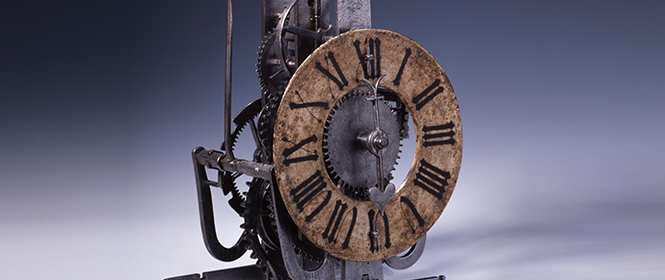
THE HISTORY OF TELLING THE TIME
Getting up at 7.20 a.m., being in the office by 9 a.m. and hitting the gym by 6.30 p.m. – we plan our days according to a tight schedule. But when did we actually start telling the time?
In this day and age, serving guests a warm meal is relatively straightforward. You invite people round at 8 o’clock., prepare the food and – when the guests show up – set the steaming hot meal down on the table. Things were much harder for a host who lived in a rural area in the year 1200. Given the lack of a precise system of hours and minutes, they could only invite people at a vague time, e.g. ‘as dusk falls’. If the guests interpreted this as meaning the very last glimmer of daylight, the food would have already gone cold.
MEETING UP AS THE COCK CROWS
The first people to divide day and night into twelve parts were the Babylonians, although our ancestors were still a long way from precise timekeeping. People used natural phenomena, such as the position of the sun, as a rough guide and simply agreed to meet at such times as when the cock crows in the morning – or, indeed, as dusk falls.
The strict division of the day has its origins in the monasteries, where the ringing of the bells told the monks that it was time for work or prayer. This practice spread to the cities, where public bells would ring on the hour to give the signal for opening and closing the city gates, for example. The length of an hour was determined by candle clocks, water clocks or sundials – and was different depending on place and season.
4 O’CLOCK IN COLOGNE MAY HAVE BEEN 6 O’CLOCK IN DÜSSELDORF
The path to a precisely defined hour can be traced back to the 14th century, when mechanical watch movements and striking mechanisms from Italy made their way across Europe. All the town’s citizens now knew what was going on, how much time they had left to ply their trade and when they had to attend a council meeting.
These mechanical clocks, which initially lost or gained 15 minutes a day, gradually became more accurate. The only problem was that they were set to different times in different cities. If the clock in Cologne showed 4 o’clock, the one in Düsseldorf may well have shown 6 o’clock. Each town had something akin to its own time zone. There was no such thing as ‘the time’. Hardly anyone noticed these discrepancies, as travelling between one city and the next meant a long and arduous journey.
The need for a synchronised time across the board only arose in the 18th century, as transport and commerce increased considerably. First of all, the postal service needed a standardised time so as to be ‘on time’ and not ‘late’.
TIME BECOMES A COMMODITY
Timekeeping definitively parted ways with natural rhythms in the factories of the early Industrial Revolution. Time became a commodity that was scarce, limited and fiercely contested. It was only during this period that public clock faces were developed with minute and second hands to show the time more precisely.
A binding, nationwide time didn’t come to Germany until 1893. The railway, with its down-to-the-minute timetables, made it necessary for standardised time across the German Reich, thus paving the way for today’s fully synchronised world in which people in different continents can schedule a video conference to the precise second.